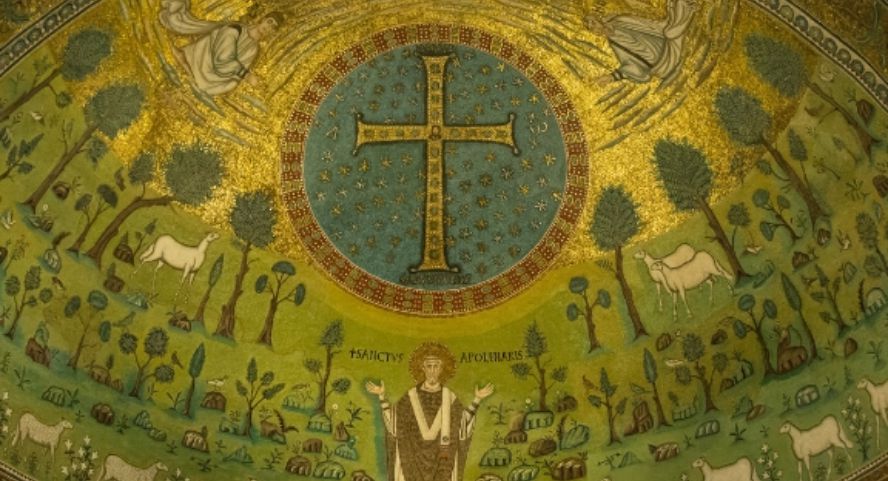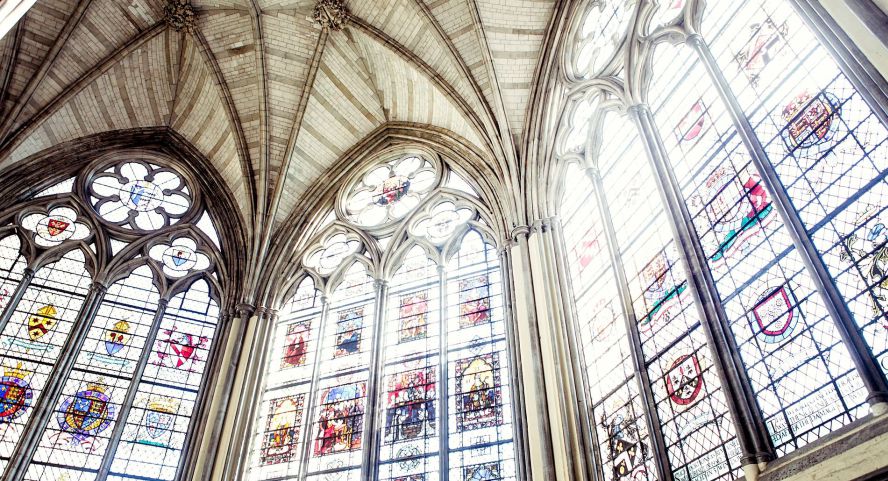'For it is improper to be addicted to the tedium of affliction': Christian Responses to Pandemic in Late Antiquity and the Early Middle Ages
Geoffrey David Dunn
John Paul II Catholic University of Lublin , Polandhttps://orcid.org/0000-0001-5880-1351
Abstract
The current COVID-19 pandemic has seen some turn to the past to see if the historical evidence provides any assistance to forecasting the probable duration and intensity of the disease and the length of time until a vaccine or cure is found. In this paper, on the contrary, the aim is to look to the present situation to help understand the past. The current pandemic, which seems impossible to halt even as vaccines start to roll out, and threatens to destroy the way people interact with one another and provide for their families has undermined confidence in the progress of medical science and the human mastery over the natural world. The fear and helplessness that has come in its wake is much the way people in previous centuries felt in the face of rampant and uncontrollable disease. In this paper several episodes of the first bubonic plague, known as the plague of Justinian, that lasted from the sixth to eighth centuries, as reported by Gregory I, bishop of Rome, and Gregory, bishop of Tours, both active at the end of the sixth century, will be explored. In light of our own experience of vulnerability because of the impotence of modern medicine so far to offer protection, we are better able to appreciate the reaction of people who lived in Lombard Italy and Merovingian France to intractable natural disaster.
Keywords:
infectious disease, pandemic, Gregory the Great, Gregory of Tours, Paul the deacon, John Immonidea, Justinianic plague, COVID-19, Rome, Castel Sant'AngeloReferences
Aberth, J., From the Brink of the Apocalypse: Confronting Famine, War, Plague and Death in the Later Middle Ages, 2nd edn, London - New York, 2010.
Alexander, J.J.G., The Limbourg Brothers and Italian Art: A New Source, ZKG 46 (1983) p. 425–435. (Crossref)
Allegrezza, F., Niccolò III, in: Bray, Enciclopedia dei Papi, 2.437–446.
Allen, P., The ‘Justinianic’ Plague, “Byzantion” 49 (1979) p. 5–20.
Allen, P. and B. Neil, Crisis Management in Late Antiquity (410–590): A Survey of the Evidence from Episcopal Letters, Supplements to Vigiliae Christianae, vol. 121, Leiden - Boston 2013. (Crossref)
Andrews, M., The Laetaniae Septiformes of Gregory I, S. Maria Maggiore and Early Marian Cult in Rome, in: The Moving City: Processions, Passages and Promenades in Ancient Rome, ed. I. Östenberg, S. Malmberg, and J. Bjørnebye, London 2015, p. 155–164.
Arnaldi, G., Giovanni Immonide e la cultura a Roma al tempo di Giovanni VIII, “Bullettino dell’Istituto Storico Italiano per il Medio Evo” 68 (1956) p. 48–75.
Bachrach, B.S., Plague, Population, and Economy in Merovingian Gaul, “Journal of the Australian Early Medieval Association” 3 (2007) p. 29–57.
Bailey, L.K., Christianity’s Quiet Success: The Eusebius Gallicanus Sermon Collection and the Power of the Church in Late Antique Gaul, Notre Dame, IN 2010. (Crossref)
Baun, Gregory’s Eschatology, in: Neil and Dal Santo, A Companion to Gregory the Great, p. 157–176.
Benedictow, O.J., Black Death 1346–1353: The Complete History, Woodbridge 2004.
Bertolini, O., Adriano I, in: Bray, Enciclopedia dei Papi, 1.681–695.
Bianchi, D., Da Gregorio di Tours a Paolo Diacono, “Aevum” 35 (1961) p. 150–166.
Blaudeau, P., Le siege de Rome et l’Orient (448–536). Étude géo-ecclésiologique, Collection de l’École française de Rome, vol. 460, Rome 2012.
Brandenburg, H., Ancient Churches of Rome from the Fourth to the Seventh Century: The Dawn of Christian Architecture in the West, transl. A. Kropp, Bibliothèque de l’Antiquité Tardive, vol. 8, Eng. edn, Turnhout 2005.
Bratož, R., Gelasio, santo, in: Bray, Encicploedia dei Papi, 1.458–462.
Bray, M (ed.), Enciclopedia dei Papi, 3 vols, Rome 2000.
Breukelaar, A., Historiography and Episcopal Authority in Sixth-Century Gaul: The Histories of Gregory of Tours Interpreted in their Historical Context, Göttingen 1994. (Crossref)
Byrne, J.P., The Black Death, Greenwood Guides to Historic Events of the Medieval World, Westport, CT - London 2004.
Cameron, A., Procopius and the Sixth Century, rev. edn, London - New York 1996, p. 40–43.
Camille, M., The Très Heures: An Illuminated Manuscript in the Age of Mechanical Reproduction, “Critical Inquiry” 17 (1990) p. 72–107. (Crossref)
Cariello, N., Giovanni VIII. Papa medioevale (872–882), Studi e Documenti, vol. 19, Rome 2002.
Castaldi, L., Il Registrum Epistolarum di Gregorio Magno, “Filologia Mediolatina” 11 (2004) p. 55–97.
Chadwick, O., Gregory of Tours and Gregory the Great, JTS 50 (1949) p. 38–49. (Crossref)
Cilliers, Roman North Africa: Environment, Society and Medical Contribution, Social Worlds of Late Antiquity and the Early Middle Ages, Amsterdam 2019. (Crossref)
Conant, J., Staying Roman: Conquest and Identity in Africa and the Mediterranean, 439–700, Cambridge Studies in Medieval Life and Thought, 4th series, Cambridge 2012. (Crossref)
Costambeys, M., Paul the Deacon and Rome, in: Writing the Early Medieval West, ed. E. Screen and C. West, Cambridge 2018, p. 49–63. (Crossref)
Costambeys, M. and C. Leyser, To be the Neighbour of St Stephen: Patronage, Martyr Cult, and Roman Monasteries, c. 600–c. 900, in: Religion, Dynasty, and Patronage in Early Christian Rome, 300–900, ed. K. Cooper and J. Hillner, Cambridge 2007, p. 262–287. (Crossref)
Demacopoulos, G.E., Gregory the Great: Ascetic, Pastor, and First Man of Rome, Notre Dame, IN 2015. (Crossref)
Drancourt, M. and D. Raoult, Yersinia pestis and the Three Plague Pandemics, “The Lancet” 14 (2014) p. 918–919. (Crossref)
Ekonomou, A.J., Byzantine Rome and the Greek Popes: Eastern Influences on Rome and the Papacy from Gregory the Great to Zacharias, A.D. 590–752, Lanham, MD 2007.
Evans, G.R., The Thought of Gregory the Great, Cambridge 1986. (Crossref)
Flemming, R., Galen and the Plague, in: Galen’s Treatise Περὶ Ἀλυπ’ιας (De indolentia) in Context: A Tale of Resilience, ed. C. Petit, Studies in Ancient Medicine, vol. 52, Leiden - Boston, 2019, p. 219–244. (Crossref)
Fontaine, J., R. Gillet, and S. Pellistrandi (eds), Grégoire le Grand. Chantilly Centre culturel Les Fontaines 15–19 septembre 1982, Colloques Internationaux du Centre National de la Recherche Scientifique, Paris 1986.
Gajano, Gregorio I, santo, in: Bray, Enciclopedia dei Papi, 1.546–574.
Goffart, W., The Narrators of Barbarian History (A.D. 550–800): Jordanes, Gregory of Tours, Bede, and Paul the Deacon, Publications in Medieval Studies, 2nd edn, Notre Dame 2005.
Gottfried, R.S., The Black Death: Natural Human Disaster in Medieval Europe, 2nd edn, New York 2010.
Hanlon, C., The Horizons of a Bishop’s World: The Letters of Gregory the Great, in: Prayer and Spirituality in the Early Church, vol. 4: The Spiritual Life, ed. W. Mayer, P. Allen, and L. Cross, Strathfield, NSW 2006, p. 339–349.
Harper, K., The Fate of Rome: Climate, Disease, and the End of an Empire, Princeton 2017. (Crossref)
Heath, C., The Narrative Worlds of Paul the Deacon: Between Empires and Identities in Lombard Italy, Amsterdam 2017. (Crossref)
Heather, P., Rome Resurgent: War and Empire in the Age of Justinian, Oxford 2018.
Heinzelmann, M., Gregory of Tours: History and Society in the Sixth Century, transl. C. Carroll, Eng. edn, Cambridge, 2001.
Herlihy, D., The Black Death and the Transformation of the West, Cambridge, MA - London 1997. (Crossref)
Hester, K.L., Eschatology and Pain in St. Gregory the Great: The Christological Synthesis of Gregory’s ‘Morals on the Book of Job’, Studies in Christian History and Thought, Eugene, OR 2008.
Horrox, R., The Black Death, Manchester, 1994.
Husband, T.B., The Art of Illumination: The Limbourg Brothers and the Belles Heures of Jean de France, Duc de Berry, New York 2008.
Jasper, D., The Beginning of the Decretal Tradition: Papal Letters from the Origin of the Genre through the Pontificate of Stephen V, in: Papal Letters in the Early Middle Ages, D. Jasper and H. Fuhrmann, History of Medieval Canon Law, Washington, DC 2001, 3–87.
Jones, A.E., Death and the Afterlife in the Pages of Gregory of Tours: Religion and Society in Late Antique Gaul, Social Worlds of Late Antiquity and the Early Middle Ages, Amsterdam 2020. (Crossref)
Kelly, J., The Great Mortality: An Intimate History of the Black Death, the Most Devastating Plague of All Time, New York 2005.
Kennedy, A., The Sword of God: Plague and Episcopal Authority in the Late Antique West, MA diss., Missouri-Columbia 2017.
Latham, J.A., Inventing Gregory ‘the Great’: Memory, Authority, and the Afterlives of the Letania Septiformis, ChH 84 (2015) p. 1–31. (Crossref)
Latham, J.A., The Making of a Papal Rome: Gregory I and the letania septiformis, in: The Power of Religion in Late Antiquity, ed. A. Cain and N. Lenski, Farnham - Burlington, VT, 2009, p. 293–304.
Le Goff, J., In Search of Sacred Time: Jacobus de Voragine and The Golden Legend, transl. L.G. Cochrane, Princeton, 2014.
Leone, A., Bishops and Territory: The Case of Late Roman and Byzantine Africa, DOP 65–66 (2011–2012), p. 5–27.
Leyser, C., The Memory of Gregory the Great and the Making of Latin Europe, 700–1000, “Oxford University History Working Papers” 7 (2013).
Little, L.K. (ed.), The End of Antiquity: The Pandemic of 541–750, Cambridge 2007. (Crossref)
Longon, J. and R. Cazelles, The Très Riches Heures of Jean, Duke of Berry, New York 1969.
McKitterick, R., Paul the Deacon and the Franks, “Early Medieval Europe” 8 (1999) p. 319–339. (Crossref)
McKitterick, R., Rome and the Invention of the Papacy: The Liber pontificalis, Cambridge 2020. (Crossref)
Markus, R.A., Gregory the Great and His World, Cambridge 1997. (Crossref)
Martyn, J.R.C., Four Notes on the Registrum of Gregory the Great, “Parergon” 19/2 (2012) p. 5–38. (Crossref)
Meier, M., The ‘Justinianic Plague’: The Economic Consequences of the Pandemic in the Eastern Roman Empire and its Cultural and Religious Effects, “Early Medieval Europe” 24 (2016) p. 267–292. (Crossref)
Meyendorff, J., Imperial Unity and Christian Divisions, The Church in History, vol. 2, Crestwood, NY 1989.
Mitchell, K. and I. Wood (eds), The World of Gregory of Tours, Cultures, Beliefs and Traditions: Medieval and Early Modern Peoples, vol. 8, Leiden - Boston 2002.
Moorhead, J., Gregory the Great, The Early Church Fathers, London - New York, 2005. (Crossref)
Mordechai, L. et al., The Justinianic Plague: An Inconsequential Pandemic?, “Proceedings of the National Academy of Sciences of the United States of America” 116, no. 51 (17 December 2019) (www.pnas.org/cgi/doi/10.1073/pnas.1903799116). (Crossref)
Moyski, M., Archangel’s Blade Processed through Streets of Gargano to Combat Virus, “Church Militant” (11 April 2020) (www.churchmilitant.com/news/article/the-swords-of-st-michael).
Murray, A.C. (ed.), A Companion to Gregory of Tours, Brill’s Companions to the Christian Tradition, vol. 63, Leiden - Boston 2015.
Neil, B., A Crisis of Orthodoxy: Leo I’s Fight against the ‘Deadly Disease’ of Heresy, in: Ancient Jewish and Christian Texts as Crisis Management Literature: Thematic Studies from the Centre for Early Christian Studies, ed. D.C. Sim and P. Allen, Library of New Testament Studies, vol. 445, Edinburgh 2012, p. 144–158.
Neil, B., Death and the Bishop of Rome: From Hormisdas to Sabinian, “Scrinium” 11 (2015) p. 109–121. (Crossref)
Neil, B., The Politics of Hagiography in Ninth-Century Rome, in: Text and Transmission in Medieval Europe, ed. C. Bishop, Newcastle, 2007, p. 58–75.
Neil, B., Seventh-Century Popes and Martyrs: The Political Hagiography of Anastasius Bibliothecarius, Studia Antiqua Austrraliensia, vol. 2, Turnhout, 2006. (Crossref)
Neil, B. and P. Allen (eds), The Letters of Gelasius I (492–496): Pastor and Micro-Manager of the Church of Rome, Adnotationes, Turnhout 2014. (Crossref)
Neil, B. and M.J. Dal Santo (eds), A Companion to Gregory the Great, Brill’s Companions to the Christian Tradition, vol. 47, Leiden - Boston 2013. (Crossref)
Nelson, E.S., The Religious, Political, and Personal Aspirations of Pope Nicholas III in the Frescoes at Old St Peter’s and the Sancta Sanctorum, Austin 2002.
Oldstone, M.B.A., Viruses, Plagues, & History, 2nd edn, Oxford 2010.
Parker, J., The 1798 Poem that Was Made for 2020, “The Atlantic” 13 May 2020 (www.theatlantic.com/culture/archive/2020/05/rime-ancient-mariner-was-made-2020/611602).
Pietri, C. and L. Pietri, Prosopographie chrétienne du Bas-Empire, vol. 2: Italie (313–604), Rome 1999.
Pietri, L. and M. Hejmans, Prosopographie chrétienne du Bas-Empire, vol. 4: Gaule (314–614), Paris 2013.
Pognon, E., Les Très Riches Heures du Duc de Berry, Geneva 1987.
Porter, S., The Great Plague, Stroud 2009.
Prosperi, A., Clemente VII, in: Bray, Enciclopedia dei Papi, 3.70–91.
Reames, S.L., The Legenda Aurea: A Reexamination of its Paradoxical History, Madison, WI 1985.
Rosen, W., Justinian’s Flea: The First Great Plague and the End of the Roman Empire, London 2007.
Riggs, D., Contesting the Legacy and Patronage of Saint Cyprian in Vandal Carthage, in: StPatr, vol. 92, ed. M. Vinzent, papers presented at the 17th International Conference on Patristic Studies, Oxford 2015, Leuven 2017, p. 357–370.
Russell, J.C., That Earlier Plague, “Demography” 5 (1968) p. 174–184. (Crossref)
Sardella, T., Simmaco, santo, in: Bray, Encicploedia dei Papi, 1.464–473.
Schacherl, L., Très Riches Heures: Behind the Gothic Masterpiece, Munich 1997.
Scheidel, W., Germs for Rome, in: Rome the Cosmopolis, ed. C. Edwards and G. Woolf, Cambridge 2003, p. 158–176.
Schwartz, L., Gargano Comes to Rome: Castel Sant’Angelo’s Historical Origins, JEH 64 (2013) p. 453–475. (Crossref)
Sennis, A., Giovanni VIII, in: Bray, Enciclopedia dei Papi, 2.28–34.
Shaw, B.D., Seasons of Death: Aspects of Mortality in Imperial Rome, JRS 86 (1996), p. 100–138. (Crossref)
Sherman, I.W., The Power of Plagues, 2nd edn, Washington, DC 2017. (Crossref)
Sotinel, C., Church and Society in Late Antique Italy and Beyond, Variorum Collected Studies Series, Farnham - Burlington, VT 2010.
Sotinel, C., Pelagio II, in: Bray, Enciclopedia dei Papi 1.541–546.
Squadrilli, T., Castel Sant’Angelo: Una storia lunga diciannove secoli. Misteri, segreti, curiosità e personaggi di uno dei più famosi monumenti del mondo, Quest’Italia, vol. 284, Rome 2000.
Squatriti, P., The Floods of 589 and Climate Change at the Beginning of the Middle Ages: An Italian Microhistory, “Speculum” 85 (2010) p. 799–826. (Crossref)
Straw, C., Gregory’s Moral Theology: Divine Providence and Human Responsibility, in: Neil and Dal Santo, A Companion to Gregory the Great, p. 177–204.
Stoclet, A.J., Consilia humana, ops divina, superstitio: Seeking Succor and Solace in Times of Plague, with Particular Reference to Gaul in the Early Middle Ages, in: Little, The End of Antiquity, p. 135–149. (Crossref)
Straw, C., Gregory the Great: Perfection in Imperfection, The Transformation of the Classical Heritage, vol. 14, Berkeley - Los Angeles 1988.
Triff, K.A., Rhetoric and Romanitas in Thirteenth-Century Rome: Nicholas III and the Sancta Sanctorum, “Artibus et Historiae” 30 (2009) p. 71–106.
Wagner, D.M. et al., Yersinia pestis and the Plague of Justinian 541–543 AD: A Genomic Analysis, “The Lancet” 14 (2014) p. 319–326. (Crossref)
Webb, M., The Churches and Catacombs of Early Christian Rome, Brighton 2001.
Whelan, R., African Controversy: The Inheritance of the Donatist Schism in Vandal Africa, JEH 65 (2014), p. 504–521. (Crossref)
Whelan, R., Being Christian in Vandal Africa: The Politics of Orthodoxy in the Post-Imperial West, Transformation of the Classical Heritage, vol. 59, Berkeley - Los Angeles 2018. (Crossref)
Ziegler, P., The Black Death, 2nd edn, London 1998.
John Paul II Catholic University of Lublin https://orcid.org/0000-0001-5880-1351
License
Papers published in Vox Patrum are covered by the Attribution-NoDerivatives 4.0 International (CC BY-ND 4.0) licence. Authors and users can use published works licensed under the CC-BY-ND since 2018. For earlier publications, copyrights are available under fair use rights in accordance with the Act of February 4, 1994 on copyrights and related rights.







